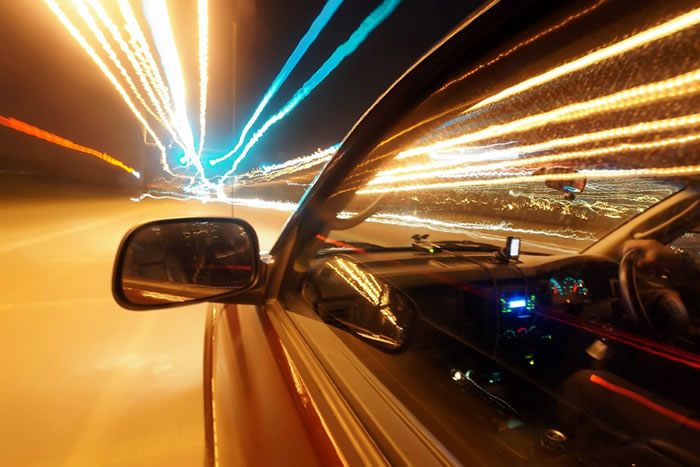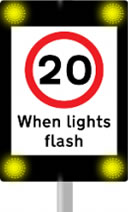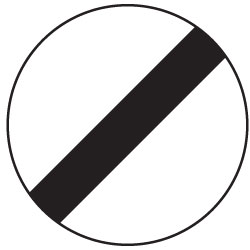Speeding whether as a qualified driver or a learner driver is easily done, especially if you’re not concentrating on the road.
Excessive or inappropriate use of speed is one of the major causes of accidents in the UK, so it’s little surprise that driving examiners take such driving behaviour seriously.
It’s not always an immediate test failure if speed is exceeded or used inappropriately, it depends on the circumstances and if you are actually aware of your actions. Explained is the common forms of speeding during a driving test, what the examiner is looking for and how to reduce or stop speeding.
Insuring a car, especially for young drivers is extremely expensive. This is of course because statistically they are the most likely to have accidents. Usually, this results from excessive or inappropriate use of speed.
Excessive speed
Excessive speed is simply driving over the speed limit. The two main reasons for this as a learner driver is that you are unaware of the current speed limit or that you are aware of what the speed limit is, but your concentration is elsewhere and you are unaware of your current speed.

Inappropriate use of speed
Inappropriate use of speed can be for many situations. A very common test failure is learner drivers approaching junctions at inappropriate speeds. Typically this will be a closed junction (see junctions for information on closed junctions), although this can also refer to crossroads and roundabouts as a form of junction. A learner may approach this form of junction too fast for what they can see. Resulting in excessive braking, stopping over the junction line or stopping unnecessarily at a roundabout when it is safe to proceed.
Other examples of inappropriate use of speed could be passing parked cars or cyclists too fast for the conditions due to not being able to see hazards (approaching vehicles) ahead far enough. Weather conditions also play a part. Speed may need to be reduced if wet especially on bends and high speed roads. The 2 second rule will also need to be extended.
How to stop speeding
If you are unaware of the current speed limit, it could be because you have failed to notice speed limit signs. Ask your passenger or driving instructor to ensure that you are aware of each and every road sign you pass and to provide a full explanation of their meaning – not just speed limit signs. Continue to do this until you are looking well ahead and reading road signs as part of the course of natural driving. This will heighten your awareness of road signs.
Alternatively you may enter a new road that does not have speed limit signs. Usually, a new road with a different speed limit to the road you were on previously will have speed limit signs, however, you will need to use your judgement on using the correct speed. Roads that have a 20 mph speed limit will be clearly signed as they are often roads with schools or large numbers of pedestrians.
Most urban roads however have a 30 mph speed limit with the occasional 40 mph limit. If the area is pedestrianized, has pavements, houses, street lighting, it is highly likely to be 30 mph limit. 40 mph roads are often wider, straighter and have less residential areas. The majority of roads where the speed limit changes are usually well signed, so practicing the reading of all road signs is of primary importance, if in doubt however, keep to 30 mph.
Although driving slower than a roads speed limit can be hazardous if the conditions allow you to drive at the actual speed limit safely, it is ultimately safer to drive 10 mph slower than 10 mph faster and exceed the speed limit. An inappropriate use of speed if done unintentionally, generally comes down to a lack of anticipation and planning. Anticipation and planning takes time to learn as it involves understanding the correct speed, actions and forward thinking for any given road or situation.
Speed limits
20 mph speed limit
Although still relatively infrequent, 20 mph speed limits are often found around highly pedestrianized areas and schools. 20 mph speed limits are however becoming more common place and are likely to be wide spread within a year or two. 20 mph zones are often hazardous areas and exceeding the speed limit in such areas is highly likely to result in a driving test failure.

Other than the typical red circular speed limit signs, another type of sigh associated with 20 mph speed limits is the 20 mph speed limit when lights flash sign. These are usually located around schools and are active at school starting and finishing times. Although they appear easy to understand, a learner can easily see only the 20 mph speed limit and not read the text and drive at 20 mph when they should in fact be driving at 30 mph. Text can vary depending on sign.
30 mph speed limit
A 30 mph speed limit is the standard found in villages, towns and cities. More urban roads will however be lowered to 20 mph speed limits in time.
40 and 50 mph speed limits
The 40 mph limit being more common than the 50 mph, these speed limits are found in less pedestrianized areas such as ring-roads and urban dual carriageways. When entering a 30 mph zone from these higher speed limits, signs are clearly displayed.

60 mph speed limit
Found on single carriageway roads that connect villages, towns and cities. A 60 mph sign is not usually displayed, instead the national speed limit sign is used. UK national speed limits depend on the type of road. For high speed single carriageways the speed limit is 60 mph.
70 mph speed limit
Dual carriageways and motorways have a maximum of 70 mph speed limit unless otherwise stated by use of signs or light signals.
Driving test speed limits
The practical driving test can be failed, although not always for driving either too fast or too slow depending on the speed limits, conditions or circumstances. Developing your speed awareness is necessary to avoid such predicaments. See speed awareness for possible speed related test failures and developing speed awareness.
DRIVING TEST RELATED INFORMATION
- Taking driving instructor on test
- Driving test age
- Can I book two driving tests?
- What to wear for driving test
- What to take to driving test
- How many manoeuvres in driving test?
- Crossing hands on driving test
- When to use handbrake
- Are driving tests fixed?
- What happens in a driving test
- Driving school instructor pass rates
- Failed driving test

Hello, I just had my driving test and the weather was undecided and it kept raining, sleet, and then sunny. On the road of my test centre when I was returning, the speed limit started at 30mph and I knew the speed. Then on that road it turns to a national speed limit road further up. However because it was raining and I couldn’t see much I was messing around with the window wipers and went above the speed limit by 5mph. I had the examiner and their line manager in the car at the time. When I got to the test centre they told me I had failed due to going over the speed limit by 5mph due to messing with window wipers. Would you say this was fair and that I should have failed? That was all I failed on and I had 3 minors.
Hello Gareth.
There is a speed enforcement guidance policy outlined by the government Crown Prosecution Service (CPS) which states that there is an acceptable margin that the limit can be exceeded by. This is 10 percent, plus 2 mph (as of 2013) and would place your speed of 35 mph whilst driving in a 30 mph limit zone as an offence.
If there was a police officer or camera that caught you, you would be looking at a fine plus penalty points. Based on that, I don’t think the examiner had any other option but to fail you I’m afraid.
Hello, I really struggle to keep my speed bang on the limit. I try to do 18 in a 20, 28mph in a 30, 37/38mph in a 40, 65+ in a 70 is this a good idea? How slow can I go without failing?
Also, occasionally I have unguarded moments where I might do 22 in a 20, 33 in a 30, 44 in a 40. Don’t think I’ve ever gone faster than 70. After accelerating or going downhill etc. Are these mistakes minors, majors, or nothing at all because the speedometer is slower than reality? I correct gently after realising speed is too high.
Would be really helpful to have some advice on this matter. I actually think that my driving would improve if I wasn’t constantly glancing at the speedometer.
Thank you
Hi Beadyi
‘I actually think that my driving would improve if I wasn’t constantly glancing at the speedometer.’
That’s an interesting comment you make there actually. When people constantly worry about exceeding the speed limit and spend too much time looking at the speedometer, they’re not paying attention to the road.
I think the problem is when you try to ‘keep your speed bang on the limit’ as you say. It’s actually quite hard to do that and will most certainly take your attention away from the road.
Fluctuating a couple of MPH over and under the speed limit is perfectly normal and is nothing to worry about, providing that if you’re over, you gently bring it back to the speed limit. It sounds to me that you’re trying too hard to maintain specific speed limits. You do need to frequently check your speed, just by taking a quick glance and you also need to make frequent adjustments to maintain a stable speed as best as possible. But your priority should be what’s going on around you.
I’m not sure how long you’ve been driving, but as you get more experienced, you gain a ‘natural’ sense of speed and tend to feel when you’re exceeding the limit. As I said, fluctuating a couple of MPH over and under is normal. I’d recommend that you don’t focus too much on precise speeds and see it as a continuous adjustment, which is what it is. When you start worrying about it less, you’ll find it a lot easier.
Thanks for that advice, will really help me. You didn’t mention the driving test, does this advice apply to that aswell?
My test is in November, do you have any advice regarding speed when it’s raining or lots of puddles?
Thanks again
Hi Beadyi,
Yes it applies to the driving test. The examiner will not mind a little fluctuation in speed. Obviously if you go over, correct it as soon as possible. Try to keep a couple of mph under the speed limit to allow for a little fluctuation. As I said, it’s impossible to keep bang on the speed limit, so if you go over, just make sure it’s not by too much.
In terms of your speed when it’s raining, it really depends on how much it’s raining and the type of road. There’s so many variables in driving because situations change so often. If there are puddles, you’ll need to be looking ahead for standing water and gently slow down before entering the puddle. Don’t forget pedestrians when driving through puddles. If you get somebody wet, the examiner wont like that. If driving on a faster road and you hit a large puddle, come off the gas and avoid hitting the brakes. Aquaplaning is scary, but you just need to ride it out.
If the roads are wet, you’ll need to extend the 2 second rule (following distance) to around 4 seconds as it’ll take you longer to stop.
You can usually keep to the normal speed limit if it’s raining moderately, but if it’s raining heavily you’ll need to reduce your speed. As I said, there’s so many variables that it’s impossible to give one answer.
Good luck on your driving test!